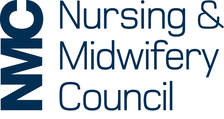What is EMDR?
EMDR can accesses a dysfunctionally stored memory, images, thoughts, beliefs, emotions and or body sensations. EMDR stimulates and activates the nervous system bilaterally via dual attention, ie 1 foot will be in the trauma and the other foot present with the therapist in the room.
During processing aspects of the memory changes, clients have noticed a distancing or fading, or the body sensations reducing, the emotions regarding the event lessening. The goal of the therapy is to reduce the disturbance of the memory .Sometimes clients are unable to access actual memories but their body sensations or emotions are telling them a story, also clients can be aware of their traumatic events and are unable to speak about it for whatever reason, EMDR can still access the traumatic events without the client verbalising what has happened.
Neorobiologically, EMDR down regulates the amygdala (which holds the stored unprocessed trauma) and allows the brain to process and consolidate the memory.
The brain at whatever age has th ability to desire itself.
How many sessions do I need?
EMDR is an individual and bespoke therapy.
The number of sessions vary to the complexity of the issues being dealt with.
It can range from 4-12 for single incident traumas (such as a car accident or natural disaster) or could be a medium to long-term solution for complex needs.
The number of sessions vary to the complexity of the issues being dealt with.
It can range from 4-12 for single incident traumas (such as a car accident or natural disaster) or could be a medium to long-term solution for complex needs.
How long do the sessions last?
EMDR sessions generally last 50 or 90 minutes depending on client needs.
If 90-minute sessions are required, this will be discussed and agreed with clients prior to the session.
If 90-minute sessions are required, this will be discussed and agreed with clients prior to the session.
Is EMDR right for me?
EMDR can target a range of mental health problems, such as: PTSD, anxiety, fear/phobias, stress, grief/loss, childhood trauma, physical/sexual/emotional abuse, flashbacks and nightmares and a method to combat stress.
Whilst EMDR is highly recommended and supported, it may not be the right therapy for you. The initial contact and assessment are when you can decide to move forward with the therapy.
Whilst EMDR is highly recommended and supported, it may not be the right therapy for you. The initial contact and assessment are when you can decide to move forward with the therapy.
How much does EMDR cost?
Pricing is £90.00 - £120.00 per 50 minute session.

